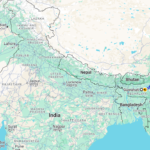India, a country with one of the richest biodiversities in the world, is home to a wide variety of wildlife species. However, rapid urbanization, deforestation, and poaching have led to the endangerment of several species. Wildlife conservation efforts in India are crucial to ensuring that these species do not vanish from the earth. Through government policies, non-governmental organizations (NGOs), and public initiatives, India is striving to conserve its wildlife and maintain ecological balance.
Table of Contents
The Importance of Wildlife Conservation in India
The conservation of wildlife in India plays a critical role in maintaining environmental balance. Each species, whether predator or prey, contributes to the ecosystem in a unique way. The loss of any species can disrupt food chains, leading to unforeseen consequences for biodiversity and human life.
Additionally, wildlife serves as a significant part of India’s cultural and religious identity. From the national symbol, the Bengal Tiger, to elephants revered in religious texts, the country’s fauna is deeply tied to its heritage.
Major Wildlife Conservation Efforts in India
1. Protected Areas and National Parks
One of the core methods of wildlife conservation in India is the establishment of protected areas, including national parks, wildlife sanctuaries, and biosphere reserves. These areas serve as safe havens for endangered species, allowing them to live and breed in their natural habitats without human interference.
Some notable examples include:
- Jim Corbett National Park – The oldest national park in India, famous for its tiger population.
- Sundarbans National Park – A UNESCO World Heritage Site, home to the largest population of Bengal Tigers.
- Kaziranga National Park – Known for its significant population of one-horned rhinoceros.
2. Project Tiger
Launched in 1973, Project Tiger is one of India’s most successful wildlife conservation programs. Its objective is to protect the rapidly dwindling tiger population through habitat management, reducing human-wildlife conflict, and anti-poaching measures. As a result, India now boasts nearly 70% of the world’s tiger population.
3. Project Elephant
Another key initiative is Project Elephant, launched in 1992. This project aims to protect elephants, their habitats, and corridors, and address human-elephant conflicts. It also focuses on ensuring the welfare of captive elephants.
4. Anti-Poaching Measures and Laws
India has strict laws under the Wildlife Protection Act of 1972, which prohibits the hunting of endangered species and enforces penalties for wildlife crimes. Various anti-poaching units and forest guards work in tandem to protect animals from illegal hunting.
In addition, technological advancements like drone surveillance, camera traps, and GPS tracking are employed to monitor wildlife movements and prevent poaching.
5. NGOs and Community Involvement
Apart from government initiatives, several NGOs like the Wildlife Trust of India and World Wide Fund for Nature (WWF) work tirelessly to conserve endangered species. These organizations engage local communities, raise awareness, and involve citizens in conservation efforts through campaigns and programs.
Challenges to Wildlife Conservation in India
While significant progress has been made, wildlife conservation in India faces various challenges:
- Human-Wildlife Conflict: As human settlements encroach upon wildlife habitats, conflicts arise, often leading to the death of animals or harm to people.
- Climate Change: Changing weather patterns have led to habitat destruction, affecting the survival of many species.
- Deforestation: Rapid urbanization and the demand for land have resulted in the loss of forests, further threatening wildlife.
How You Can Contribute to Wildlife Conservation in India
- Support NGOs: Contributing time or donations to reputable NGOs involved in wildlife conservation can help expand their efforts.
- Practice Sustainable Living: Reducing your carbon footprint, conserving water, and using eco-friendly products can aid in environmental preservation.
- Spread Awareness: Educate yourself and others about the importance of wildlife and conservation efforts. The more people are aware, the stronger the collective effort will be.
Conclusion
India’s wildlife is a vital part of the country’s natural heritage. Through concerted efforts by the government, NGOs, and the public, wildlife conservation in India is making strides. However, continued vigilance, stronger policies, and community involvement are needed to ensure that future generations can witness the majesty of India’s fauna in their natural habitats.
FAQs
-
What is the primary focus of wildlife conservation in India?
The primary focus is on preserving endangered species, protecting natural habitats, and reducing human-wildlife conflicts.
-
What are the major wildlife conservation projects in India?
The major projects include Project Tiger, Project Elephant, and the establishment of national parks and wildlife sanctuaries.
-
How can I contribute to wildlife conservation in India?
You can support wildlife NGOs, practice sustainable living, and raise awareness about the importance of conservation.
-
What are the challenges to wildlife conservation in India?
Key challenges include human-wildlife conflict, climate change, and deforestation, which threaten the survival of many species.
Recent Posts
- Wildlife Conservation Efforts in India

- Best Time to Visit Kaziranga National Park: Complete Guide

- How to Tell Wild Animals Questions and Answers: A Detailed Guide

- How to Tell Wild Animals Summary: A Fun and Engaging Overview

- What Sound Does a Giraffe Make?


